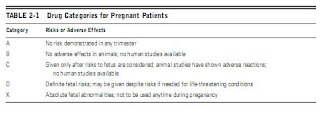The review of systems (ROS) is a comprehensive and systematic review of subjective symptoms affecting different bodily systems (Table 2–2). The value of performing a ROS together with the physical examination has been well established.
The clinician records both negative and positive responses. Direct questioning of the patient should be aimed at collecting additional data to confirm or rule out those disease processes that have been identified by the clinician as likely explanations for the patient’s symptoms. This type of questioning may also alert the clinician to underlying systemic conditions that were not fully described in the PMH. Furthermore, the ROS will help to monitor changes in medical conditions. The design of the ROS is aimed at categorizing each major system of the body so as to provide the clinician with a framework that incorporates many different anatomic and physiologic expressions reflective of the patient’s medical status. The ROS includes general categories, to allow for completeness of the review. A complete ROS includes the following categories:
1. General 2. Head, eyes, ears, nose, and throat (HEENT) 3. Cardiovascular 4. Respiratory 5. Dermatologic 6. Gastrointestinal 7. Genitourinary 8. Gynecologic 9. Endocrine 10. Musculoskeletal 11. Hematologic-lymphatic 12. Neuropsychiatric
The clinician records both negative and positive responses. Direct questioning of the patient should be aimed at collecting additional data to confirm or rule out those disease processes that have been identified by the clinician as likely explanations for the patient’s symptoms. This type of questioning may also alert the clinician to underlying systemic conditions that were not fully described in the PMH. Furthermore, the ROS will help to monitor changes in medical conditions. The design of the ROS is aimed at categorizing each major system of the body so as to provide the clinician with a framework that incorporates many different anatomic and physiologic expressions reflective of the patient’s medical status. The ROS includes general categories, to allow for completeness of the review. A complete ROS includes the following categories:
1. General 2. Head, eyes, ears, nose, and throat (HEENT) 3. Cardiovascular 4. Respiratory 5. Dermatologic 6. Gastrointestinal 7. Genitourinary 8. Gynecologic 9. Endocrine 10. Musculoskeletal 11. Hematologic-lymphatic 12. Neuropsychiatric
Numerous examples can be provided to underscore the importance of the ROS. Seemingly unrelated systemic disorders that significantly affect a patient’s dental care may be disclosed. A woman may disclose a history of hoarseness (throat category), which, when coupled with a history of smoking and neck lymph node examination, may uncover a cancer of the throan. A woman complaining of burning in her mouth might advise her dentist that she is taking a broad-spectrum antibiotic for a urinary tract infection (genitourinary category); this information might allow the dentist to determine that the antibiotic is the underlying cause of an oral fungal infection and to provide the patient with appropriate care. By carefully questioning the patient about each system listed above (and listed more specifically in Table 2-2), the dental practitioner can assess what the impact of systemic disorders will be on the patient’s dental management.

